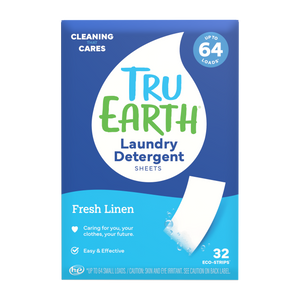Laundry day is an essential part of our routine, but what happens when our clothes start causing skin irritations? Detergent rashes, also known as laundry detergent allergies, can leave us feeling itchy and uncomfortable.
By unraveling the basics of detergent rashes and implementing proactive measures, you'll enjoy the benefits of fresh, clean laundry without the discomfort of skin irritations. Let's explore the realm of detergent rashes and discover the path to maintaining a harmonious balance between clean clothes and healthy skin.

The Causes and Symptoms Of Detergent Rashes
Detergent rashes occur when our skin comes into contact with certain chemicals or ingredients found in laundry detergents. The symptoms can vary from person to person, but common signs include:
- Skin redness and irritation: The affected area may appear red, inflamed, or develop a rash-like pattern.
- Itching and discomfort: The rash can be intensely itchy, leading to a strong urge to scratch.
- Dryness and flaking: The skin in the affected area may become dry, leading to flakiness or peeling.
- Allergic reactions: In extreme cases, some individuals may experience more severe symptoms such as hives, swelling, or even difficulty breathing.
Detergent rashes are often caused by the presence of allergens or irritants in laundry detergents, such as fragrances, dyes, enzymes, or harsh chemicals. It's important to recognize the causes and symptoms of detergent rashes to effectively address them.
Treating Detergent Rashes: Steps for Relief
If you find yourself dealing with a detergent rash, here are some steps you can take to alleviate the discomfort and promote healing:
Identify the culprit
Determine which laundry detergent is causing the allergic reaction. Look for hypoallergenic, fragrance-free, and dye-free options specifically designed for sensitive skin.
Gentle cleansing
Wash the affected area with mild soap and lukewarm water to remove any traces of detergent and soothe the skin. Avoid using harsh soaps or scrubbing vigorously, as this may further irritate the rash.
Moisturize and soothe
Apply a hypoallergenic, fragrance-free moisturizer or aloe vera gel to the affected area. These products can help soothe the skin, reduce itching, and promote healing.
Cool compresses
Apply short periods of cool compresses or damp cloths to the affected area to alleviate itching and reduce inflammation.
Over-the-counter remedies
Consider using over-the-counter hydrocortisone creams or ointments to relieve itching and inflammation. Follow the instructions and use them as directed by the packaging or consult with a healthcare professional for guidance.
Antihistamines
If the itching is persistent or severe, antihistamine medications, such as diphenhydramine, can help reduce the allergic response. However, consult a healthcare professional or pharmacist to ensure safe and appropriate use.
Seek medical advice
If the rash persists, worsens, or covers a large area of your body, it's advisable to consult a healthcare professional. They can provide a proper diagnosis, prescribe stronger medications if necessary, and offer further guidance on managing and preventing future detergent rashes.
Preventing Detergent Rashes: Tips for Laundry Care
Prevention is key when it comes to avoiding detergent rashes. Follow these tips to minimize your risk:
Choose gentle detergents
Opt for hypoallergenic, fragrance-free, and dye-free laundry detergents specifically formulated for sensitive skin. Look for products labeled as "free and clear" or "gentle" to ensure they are suitable for your needs. For the perfect solution, look to Tru Earth. Tru Earths' laundry detergent strips are free of harsh chemicals and are the perfect choice for those with sensitive skin.
Double rinse
Run an extra rinse cycle after washing your clothes to ensure all traces of detergent are thoroughly rinsed out. This step can help minimize skin contact with residual detergent.
Test new detergents
Before fully switching to a new detergent, perform a patch test on a small area of your skin, such as the inner forearm. Observe any signs of irritation or rash for at least 24 hours before using it for your laundry.
Avoid fabric softeners and dryer sheets
These products often contain fragrances and other chemicals that can irritate sensitive skin. Consider skipping them or opt for natural alternatives like vinegar or dryer balls to soften your laundry.
Wear gloves
If you have sensitive skin or a history of detergent rashes, protect your hands by wearing gloves when handling laundry detergents or folding freshly washed clothes.
Proper storage
Store your laundry detergents in a cool, dry place, away from direct sunlight and moisture. This helps preserve their effectiveness and prevents any potential contamination.

Final Thoughts
Dealing with a detergent rash can be uncomfortable, but with the right knowledge and precautions, you can effectively treat and prevent these skin irritations. By understanding the causes and symptoms of detergent rashes, taking proper treatment steps, and implementing preventive measures, you can enjoy a worry-free laundry experience and maintain healthy, irritation-free skin.
Remember, if the rash persists or becomes severe, it's always best to seek medical advice from a healthcare professional for proper diagnosis and treatment. Prioritizing gentle detergents, proper laundering techniques, and awareness of potential triggers can help you minimize the risk of detergent rashes and keep your skin healthy and happy during laundry time.

